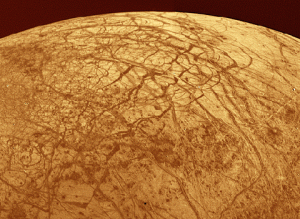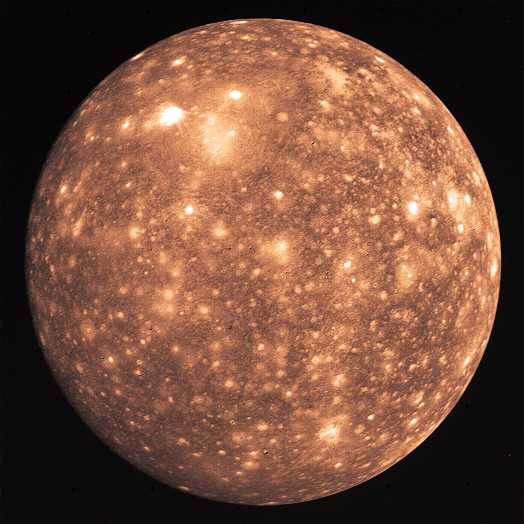Jupiter is the largest planet in the solar system. It’s a gas giant. It’s one of the brightest objects in the night sky. Planet doesn’t have a solid surface. Jupiter always took interest of astronomers and NASA because of its moon Europa. Scientists believe that Europa has an ice-covered liquid ocean. Atmosphere of Jupiter is based on hydrogen and helium. Jupiter always became a title of cultures and it affected mythological stories to modern books. Name of planet is coming from Roman God Jupiter. Jupiter and Jupiter Moon’s exploration target is one of the biggest aims of NASA. How many moons of Jupiter are there?
There are 67 confirmed moons of Jupiter. Ganymede is the largest moon of planet. Moon has a brownish color because of rocky environment. Scientist believe that surface of Ganymede includes frosty polar caps. Especially high northern craters are very bright and lots of scientists agree that its ice but Ganymede’s ice areas are very short like 5 kilometers or 2 kilometers. Moon is the largest one in the solar system; it’s larger than Mercury and very close to Mars.
Callisto is also a big moon of Jupiter. NASA has sent lots of spacecraft like Galileo to photo this moon. So it’s today possible to see detailed photos of Callisto. Moon’s surface is full of craters. Also Callisto is offering a discussion because of the dark layer in its surface and dark layers and very close to brightest layers. It’s still not possible to say the reason or main ingredients of dark layer but it’s possible to see it nearly all craters of Callisto. Scientists believe that bright areas are ice slopes.

Io is also known as cheese moon with its cheese yellow color. There are also orange and red areas which are active volcanoes of moon. Scientists believe that Io moon is full of sulfurous and lava materials. Galileo spacecraft took the best photos of Io in 1999 mission. It goes close to Io as 130,000 kilometers and took photos from its solid state onboard imaging camera. According to photos some surface sites of Io is always changing by volcanic eruptions.
Europa is one of the most interesting moons of Jupiter. Scientists believe that Europa’s surface is totally ice slops. It’s also possible to see deep and rocky areas of Europa. According to researches, craters of Europa are very young and still active. Especially Pwyll Crater is including various terrain types. Bright white areas close to young craters may be sign of fresh and new ice slops. Different surface features of Europa are creating problem for scientists who write a geological history of it. NASA’s Galileo spacecraft took some shocking photos from Europa that is possible to see ice floes easily. Also these photos showed that it may be possible to find some liquid water inside the ice slops.

These four moons are taking their names from Zeus’s lovers. They are most active objects in the solar system. It’s true that Galilean moons are bigger than lots of dwarf planets. These moons are discovered first by Galileo. The telescope he developed enabled detailed scenes from these moons. Scientists believe that Europa Moon’s surface is very close to Antarctic Lake Vostok and it may be possible to see life in this area. Antarctic Lake Vostok is offering microbial life in the deep points of it. Also some scientists claim that Europa’s volcanoes are splitting water to surface and there are some keysers. Also Ganymede moon may include a salt-water ocean but it’s only possible under 200 km of moon’s surface.





